CNC Welding Machine Guide: Types, Benefits & Applications
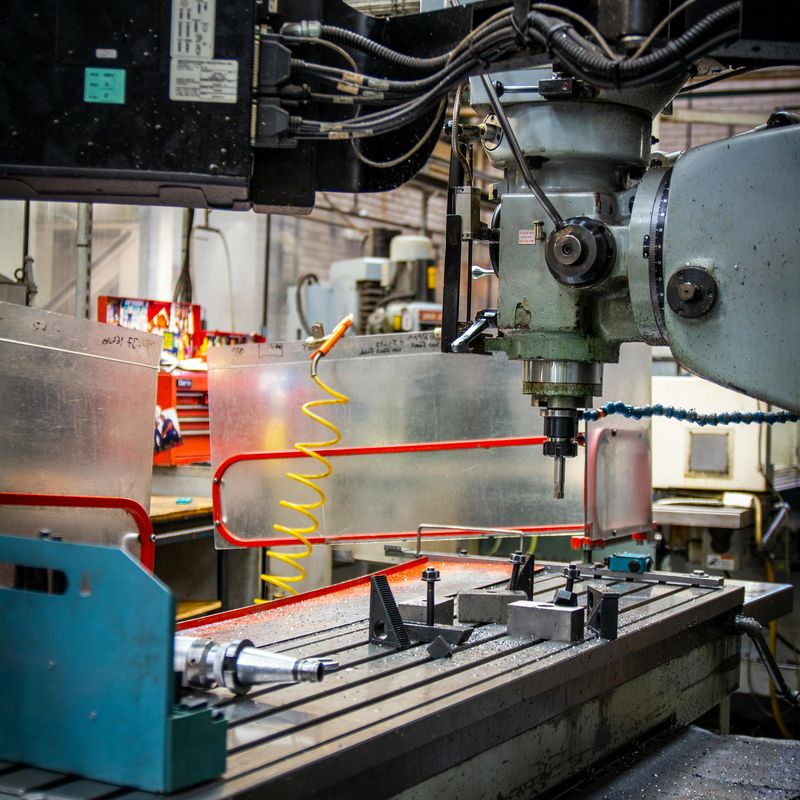
In the evolving world of plastic fabrication, precision and automation are increasingly vital—especially when it comes to high-volume or complex welds. CNC plastic welding machines offer an advanced solution by combining computer numerical control (CNC) technology with thermal plastic welding processes.
These machines are engineered to deliver consistent, high-quality welds with minimal human intervention, making them ideal for industries that demand accuracy, repeatability, and efficiency. From automotive manufacturing to medical device production, CNC plastic welding is transforming how thermoplastics are joined.
This guide delves into the features, types, working principles, and industry applications of CNC plastic welding machines, helping professionals understand their benefits over manual methods, as well as how to overcome common operational challenges.

Table of Contents
What is CNC Plastic Welding?
Types of CNC Plastic Welding Machines
How CNC Plastic Welding Machines Work
Advantages of Using CNC Plastic Welding Machines
Applications of CNC Plastic Welding Machines
Common Problems in CNC Plastic Welding
Final Summary
What is CNC Plastic Welding?
CNC plastic welding machines are advanced systems that automate the joining of thermoplastic materials, which become pliable when heated and return to a solid state upon cooling. These machines replace manual intervention with programmed instructions monitored through integrated sensors, thereby eliminating human variability and ensuring consistent, high-quality welds.
This technology is ideal for industries that demand perfection, such as medical device manufacturing or aerospace engineering.
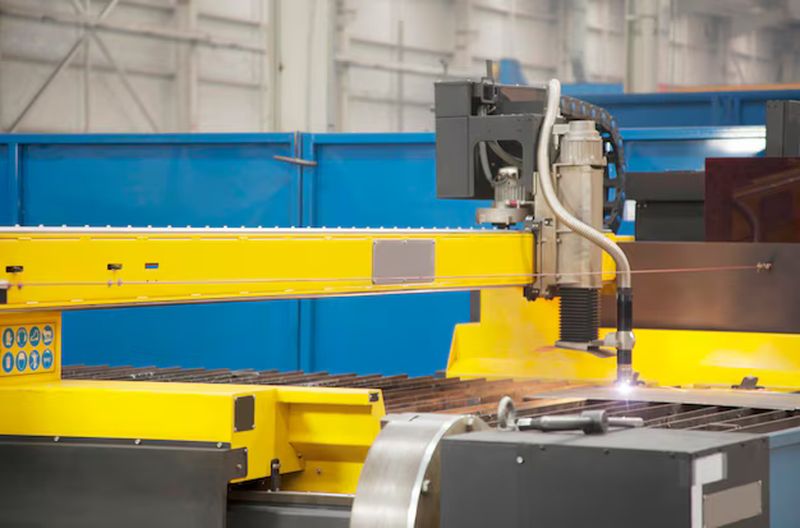
The term "CNC" refers to the computerized control of machining tools, adapted here for welding applications. The use of standards such as ASTM D2657 ensures that the welds meet specific strength requirements, while ISO 12176 provides guidelines for the safety and performance of plastic pipe welding equipment.
These standards are crucial in guaranteeing the reliability and safety of the welding process.
Overview of CNC Welding Technology in Plastics
CNC welding machine technology relies on three fundamental elements working in harmony to create precise, reliable bonds: Heat Generation, Pressure Application, and Automated Precision. These elements are supported by hardware components such as servo motors and sensors, which ensure accurate and consistent welding.
Technical Framework
- Heat Generation: Utilizes ultrasonic transducers, lasers, or friction to provide the necessary energy for welding.
- Pressure Application: Ensures consistent force distribution through precision pressure systems.
- Automated Precision: Monitors and controls the entire process through advanced sensing technology and adaptive software.
Technological Evolution
The evolution of welding technology has seen a significant shift from traditional manual methods to modern CNC welding machines. Early welding processes relied heavily on manual control and operator skill, which often led to inconsistencies and quality issues.
The introduction of CNC technology has revolutionized the industry by providing automated control, real-time monitoring, and adaptive optimization. This transition has resulted in higher precision, improved repeatability, and increased efficiency in plastic welding applications.
Types of CNC Plastic Welding Machines
CNC plastic welding machines can be categorized based on the welding principle: mechanical types (e.g., butt fusion) and energy types (e.g., ultrasonic, laser, infrared). Each type is designed to handle specific materials and applications, with unique advantages and parameters.
Butt Fusion CNC Welding Machines
Butt fusion welding is a mechanical process that joins two pieces end-to-end using heat and pressure. This method is ideal for materials such as high-density polyethylene (HDPE) and polypropylene (PP), commonly used in water infrastructure and chemical processing applications.
Application Case: The Shanghai Water Authority successfully deployed CNC welding machines to join 1.2-meter diameter HDPE pipes for their smart water network project. The automated process achieved 99.8% joint reliability, significantly outperforming traditional methods.
Technical Fit: This technology is chosen for its ability to create leak-proof joints with consistent heating time, temperature, and pressure. It is particularly effective for large-diameter pipes and high-pressure environments.
Ultrasonic CNC Plastic Welding
Ultrasonic welding uses high-frequency vibrations (20-40kHz) to join thermoplastic materials. This method is ideal for precision applications requiring clean, adhesive-free joints.
Application Case: A leading medical device manufacturer utilizes ultrasonic CNC welding for assembling insulin pump components. The precision-controlled vibrations create hermetically sealed joints without contamination risks, maintaining product sterility while achieving cycle times under 3 seconds.
Technical Fit: Ultrasonic welding is chosen for its ability to create sterile, contamination-free joints, making it suitable for medical devices and automotive components with complex geometries.
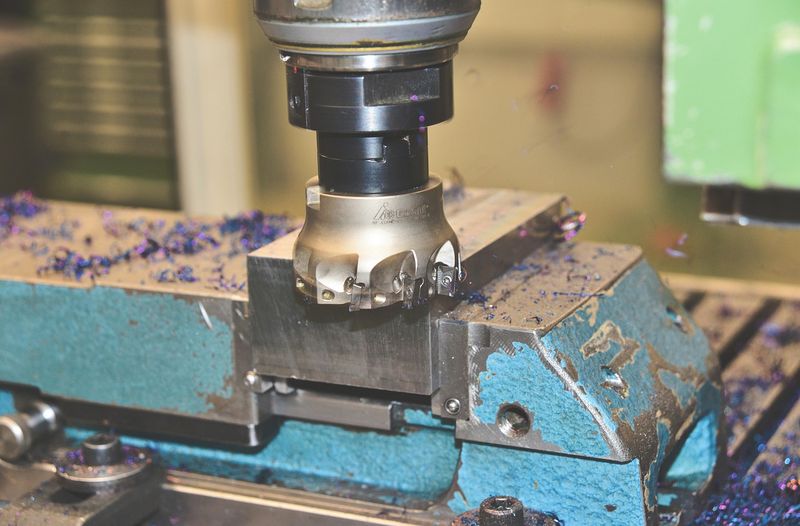
Advanced CNC Welding Technologies
Recent innovations have expanded CNC welding capabilities to include laser, friction, and infrared welding. These advanced technologies offer unique advantages for specific applications.
Laser Welding: Tesla's Gigafactory uses transparent-to-laser CNC welding machines for battery enclosures, achieving +/- 0.02mm precision while maintaining IP67 sealing requirements.
Friction Welding: Aerospace supplier Safran implemented CNC friction welding for composite fuel line components, reducing assembly time by 65% while meeting stringent FAA requirements.
Infrared Welding: Medtronic employs CNC-controlled infrared welding for silicone-based implantable devices, where contact-free heating prevents material contamination while ensuring biocompatibility.
Each of these advanced technologies is selected based on the specific requirements of the application, such as material type, precision needs, and environmental conditions.
How CNC Plastic Welding Machines Work
CNC plastic welding machines combine precision mechanical and digital components to achieve superior results. The key components and process flow are designed to maintain high accuracy and consistency throughout the welding process.
Core System Components
The heart of these machines is the CNC controller, which coordinates movements and energy delivery with a documented repeatability of 99.7%. Key components include:
- Servo Motors: Provide 0.1μm precision for positioning.
- Temperature Sensors: Ensure ±0.5°C accuracy.
- Pressure Monitoring Systems: Offer 0.1 MPa resolution.
Process Flow
The welding process involves several stages, each with specific parameters and time allocations:
- Material Input: Components are loaded into the machine.
- Heat Application: Temperature is precisely controlled to ±1°C to ensure optimal material flow.
- Pressure Application: Pressure is regulated within 1% tolerance to maintain consistent bonding.
- Cycle Timing: Microsecond-level cycle control ensures precise timing.
- Cooling: Typically accounts for 60% of the cycle time, ensuring the joint solidifies correctly.
- Quality Verification: Final inspection using AI-driven vision systems to detect misalignments as small as 0.1mm.
Fault Diagnosis
Modern CNC welding machines incorporate advanced sensors that detect anomalies in real time. For example, a sudden pressure drop can trigger an automatic shutdown to prevent defective welds.
This feature is crucial for maintaining high-quality standards and is closely related to the "Common Problems" section, which provides detailed troubleshooting guidance.
Advantages of Using CNC Plastic Welding Machines
CNC plastic welding machines offer significant benefits across multiple dimensions: quality, efficiency, cost, and safety.
Quality
- Precision Manufacturing: CNC welding machines achieve industry-leading precision through computer-controlled parameters.
Temperature control within ±0.5°C, pressure regulation at 0.1 MPa resolution, and positioning accuracy of ±0.02mm ensure every weld meets exact specifications. This precision reduces defect rates by up to 85% compared to manual processes.
- Quality Assurance: Digital parameter logging and 100% process traceability ensure consistent quality. Automated quality documentation meets ISO 9001:2015 requirements for quality management.
Efficiency
- Faster Production Cycles: CNC welding machines reduce cycle times by up to 40% through automated operation.
High-speed ultrasonic welders complete joints in under 3 seconds, while automated loading systems cut handling time by 60%. These efficiency gains enable 24/7 production capabilities, with documented uptime rates exceeding 95%.
- ROI-Driven Cost Effectiveness: While requiring an initial investment, CNC welding machines typically achieve ROI within 12-18 months. This is achieved through a 70% reduction in labor costs, an 85% decrease in material waste, and a 50% reduction in quality control costs.
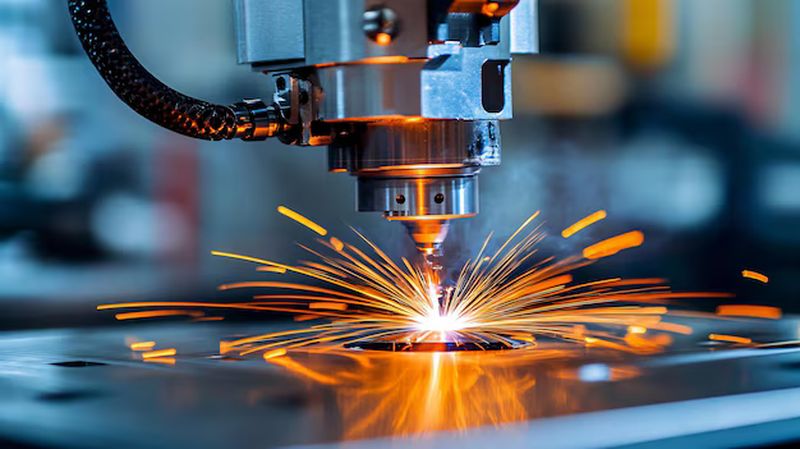
Safety
CNC welding machines meet OSHA standard 1910.212 for machine guarding, incorporating comprehensive safety features such as enclosed welding zones with automatic shutoffs, emergency stop systems with response times under 100ms, and fume extraction meeting EPA Method 204 requirements.
These measures reduce workplace incidents by 90% compared to manual welding operations.
ROI Calculator
To better understand the financial benefits, consider the following ROI calculator for different production scales:
- Annual Production Volume: 100,000 units vs. 1,000,000 units
- Initial Investment: $500,000
- Labor Cost Savings: 70%
- Material Waste Reduction: 85%
- Quality Control Savings: 50%
- Estimated ROI: 12 months for 100,000 units; 18 months for 1,000,000 units
This calculator provides a clear picture of the potential cost savings and return on investment for manufacturers considering CNC plastic welding machines.
Applications of CNC Plastic Welding Machines
CNC plastic welding machines have revolutionized manufacturing across industries, offering unmatched precision, reliability, and versatility. Their advanced capabilities make them essential for demanding applications requiring FDA compliance and aerospace certification.
Industrial Pipe Systems
CNC plastic welding technology is crucial for fabricating industrial-grade pipes and fittings using materials such as HDPE, PP, PB, and PVDF. These materials are essential in sustainable infrastructure, including water management systems, gas distribution networks, and chemical processing facilities.
- Material Challenge: Ensuring chemical resistance and longevity.
- Technical Fit: CNC butt fusion systems provide precision alignment and temperature control, creating leak-proof joints certified for high-pressure environments.
- Compliance Requirement: Joints must meet industry standards for safety and reliability in critical infrastructure.
Specialized Industry Applications
CNC plastic welding machines are integral to various specialized industries:
- Automotive: Welding critical components like fuel systems and safety equipment. The technology meets stringent automotive quality standards while maintaining high-volume production efficiency.
- Medical Device Manufacturing: FDA-compliant CNC ultrasonic welding systems ensure sterile assembly of Class I, II, and III devices. The ISO 13485-certified process eliminates contamination risks through controlled, solvent-free joining.
- Aerospace: AS9100-certified CNC welding processes are used for lightweight, high-strength components that meet rigorous safety standards.
- Consumer Goods: Enabling sustainable manufacturing through recyclable plastic assemblies while maintaining premium finish quality.
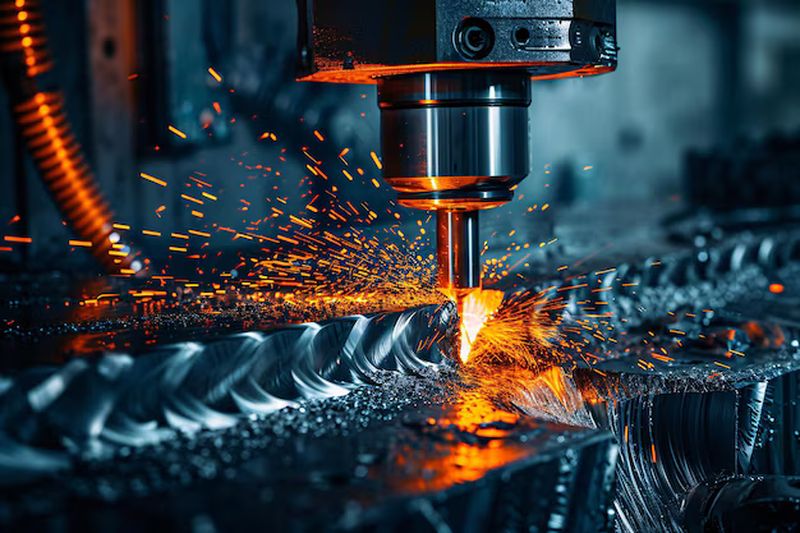
Innovation in Custom Manufacturing and Prototyping
CNC plastic welding systems excel in advanced prototyping and custom manufacturing, offering programmable precision for complex geometries and tight tolerances. This capability supports rapid product development across industries, from medical device prototypes to aerospace components.
- Material Challenge: Creating assemblies designed for end-of-life recycling.
- Technical Fit: The technology supports the use of recycled materials and enables sustainable manufacturing practices.
- Compliance Requirement: Products must meet environmental and quality standards for sustainable production.
Common Problems in CNC Plastic Welding
While CNC plastic welding machines offer significant advantages, understanding and addressing potential challenges is crucial for optimal performance.
This comprehensive guide outlines common issues and their solutions, helping you maintain exceptional weld quality and minimize costly downtime.
Heat and Pressure Control Issues
Problem: Inconsistent weld strength due to temperature and pressure variations.
Cause: Sensor inaccuracies or pressure system malfunctions.
Solution: Perform monthly sensor calibration using certified equipment and verify temperature accuracy daily (±1°C tolerance). Conduct weekly pressure system checks within the 10-15 MPa range.
Utilize AI-driven real-time compensation to maintain consistent parameters.
Material Preparation Best Practices
Problem: Contaminated or improperly prepared materials lead to defective welds.
Cause: Inadequate cleaning or storage conditions.
Solution: Clean surfaces with approved solvents (ISO 9001 certified) and store materials in climate-controlled environments (20-25°C, 45-55% RH). Implement pre-weld material inspection checklists to ensure quality.
Alignment and Fixturing Solutions
Problem: Misaligned components resulting in poor weld quality.
Cause: Fixture inaccuracies or improper calibration.
Solution: Implement weekly fixture calibration protocols and use laser alignment verification systems. Document alignment checks in digital logs for traceability.
Quality Assurance Tools
Access comprehensive resources such as the Troubleshooting Guide PDF, online weld parameter calculator, and maintenance scheduling templates to support consistent quality control.
Software Management
Problem: Software glitches or outdated systems affecting machine performance.
Cause: Lack of regular updates or backup protocols.
Solution: Ensure monthly software updates and patches, establish regular backup protocols, and implement operator certification programs to maintain reliability.
Early Warning Mechanisms
Modern CNC welding machines incorporate machine learning algorithms to predict potential sensor failures or anomalies. This proactive approach helps in minimizing downtime and maintaining consistent quality.
Final Summary
After exploring the features, types, working principles, advantages, applications, and common challenges of CNC plastic welding machines, it's clear that selecting the right partner is crucial for success. Dizo stands out as the industry leader and trusted solution provider.
At Dizo, we combine decades of experience with cutting-edge technology to deliver CNC plastic welding machines that meet the highest standards of precision and reliability. Our machines incorporate advanced CNC controllers, adaptive software, and robust mechanical designs to ensure consistent, high-quality welds across a wide range of materials and applications.
With Dizo as your partner, you gain access to the best technology, expert support, and tailored solutions that empower your production and ensure lasting success.
If you're ready to elevate your plastic welding processes, contact Dizo today and discover how our CNC plastic welding machines can make a difference for your business.






